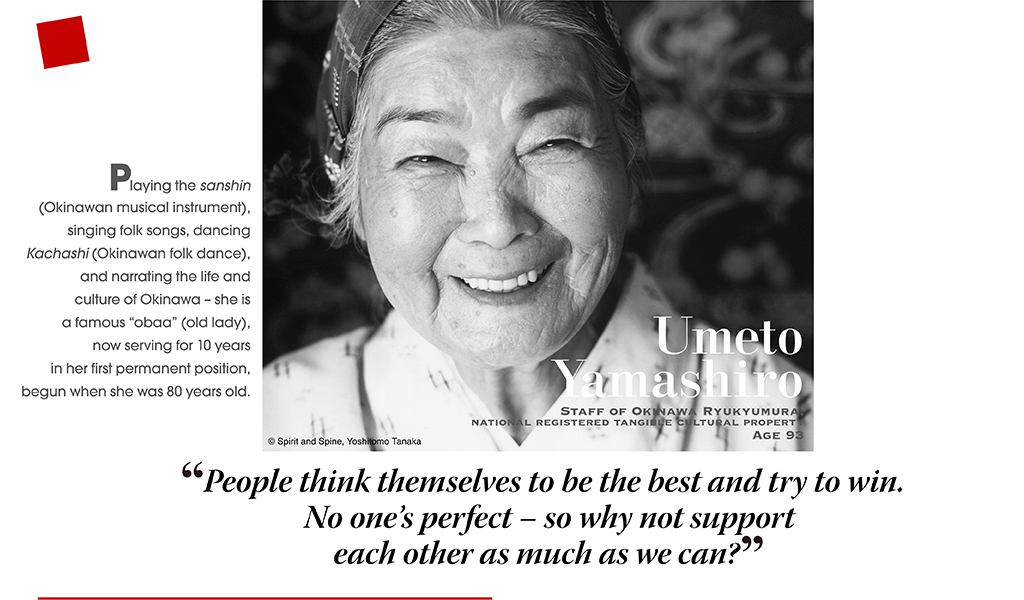
At the battle of Okinawa, the residents were forced to evacuate to the north. Leading her younger brother and sister by both hands, Umeto fled carrying as much as she could – on her back, and even on her head. She was seven months pregnant at the time. After the month-long escape journey, she surrendered and gave birth safely. While she practiced to improve herself after finding the Rinri Institute of Ethics, the attitude of her husband who used to be cold became warmer. Receiving even his words of thanks in the evening of his life, she regretted that she had not begun it earlier.
Through the story told by the cheerful, sweet “obaa,” school-trip students who are of the same generation as her great-grandchildren are brought to an important awareness before leaving for home.

Umeto Yamashiro
Born in 1921 in Yomitanson, Okinawa. Received the teacher’s license of Ryukyu classical music at 70 and the certificate of sanshin master at 80, and has been teaching her students until now. She has been working at the village office of Ryukyu-mura since 2000. In the same year, joined the Katei Rinri no Kai (Society of Rinri at Home). Achieved a record of 300-time perfect attendance of the “Ohayo (Good Morning) Rinri Juku.” Cooperation: Ryukyumura. Katei Rinri no Kai, Central Okinawa
This article has been originally appeared in “Shinsei” magazine,
October 2010 issue, published by RINRI Institue of Ethics. Partially rewritten
to update for this internet relaesing.





































































































